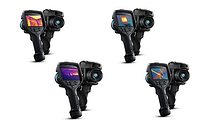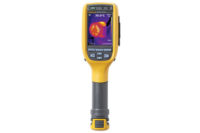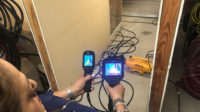NEW YORK – May 1, 2009 (AP) -- To screen passengers for swine flu and other contagious diseases, some airports use thermal imaging cameras to see whether travelers have fevers, without having to stick thermometers in their mouths. So how do the cameras work?
The devices are just like regular cameras, except that instead of recording light that objects reflect, these cameras are sensitive to heat. They can even work in the dark.
Recordings from these cameras show up on video screens with hotter objects looking brighter. The systems are very sensitive, measuring temperatures down to a fraction of a degree Fahrenheit, said Andrew Sarangan, an associate professor in the University of Dayton's electro-optics program.
Thermal cameras were rolled out during the SARS outbreak in 2002 and 2003, and airports in Singapore and China have been using them continuously since, said Alan Thomson, regional sales director at U.K.-based Irisys, a maker of thermal imaging devices.
Now manufacturers say they've noticed an uptick in orders in recent days. "The phone hasn't stopped ringing," Thomson said.
In Mexico, which already has 10 such cameras, the transportation secretary, Juan Molinar, said Thursday that 40 more were being bought for the country's eight largest airports.
Of course, while the cameras can detect higher temperatures, they can't screen for swine flu itself. Someone running to catch a flight can have a higher body temperature, as can someone who's just had a drink. A fever also does not necessarily mean someone is sick with swine flu, so airports need to do further screening once they spot passengers with high temperatures.
Irisys' cameras, which cost about $3,000, merge visual and thermal images to create a "heat picture" of a person. This image shows up on a screen on the back of the camera, much like the displays on consumer cameras. A pointer automatically shows the hottest area in the picture, which is usually a person's face, mainly because it's not covered in clothes.
Tony Trunzo, senior vice president at Wilsonville, Ore.-based Flir Systems Inc., said his company has seen orders pick up not only from airports, but factory operators as well.
Flir's cameras have improved significantly since the SARS outbreak, Trunzo said. The cameras have a higher resolution, for example. They've gotten cheaper, too, though the company's cameras still range between $10,000 and $15,000.
Flir also has determined that it's best to screen one person at a time, instead of scanning a large crowd.
How thermal-imaging cameras can spot flu fevers
Looking for a reprint of this article?
From high-res PDFs to custom plaques, order your copy today!







